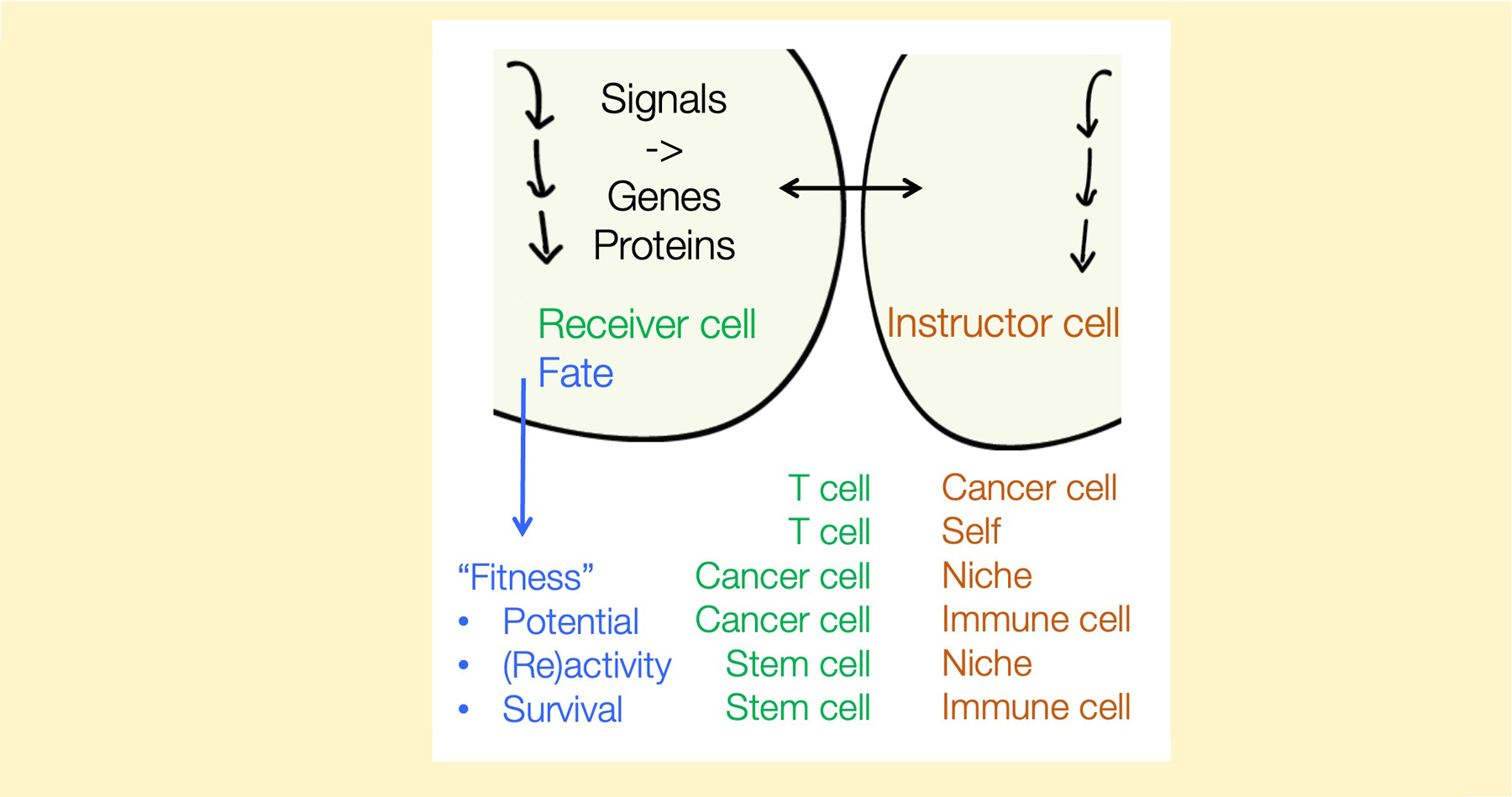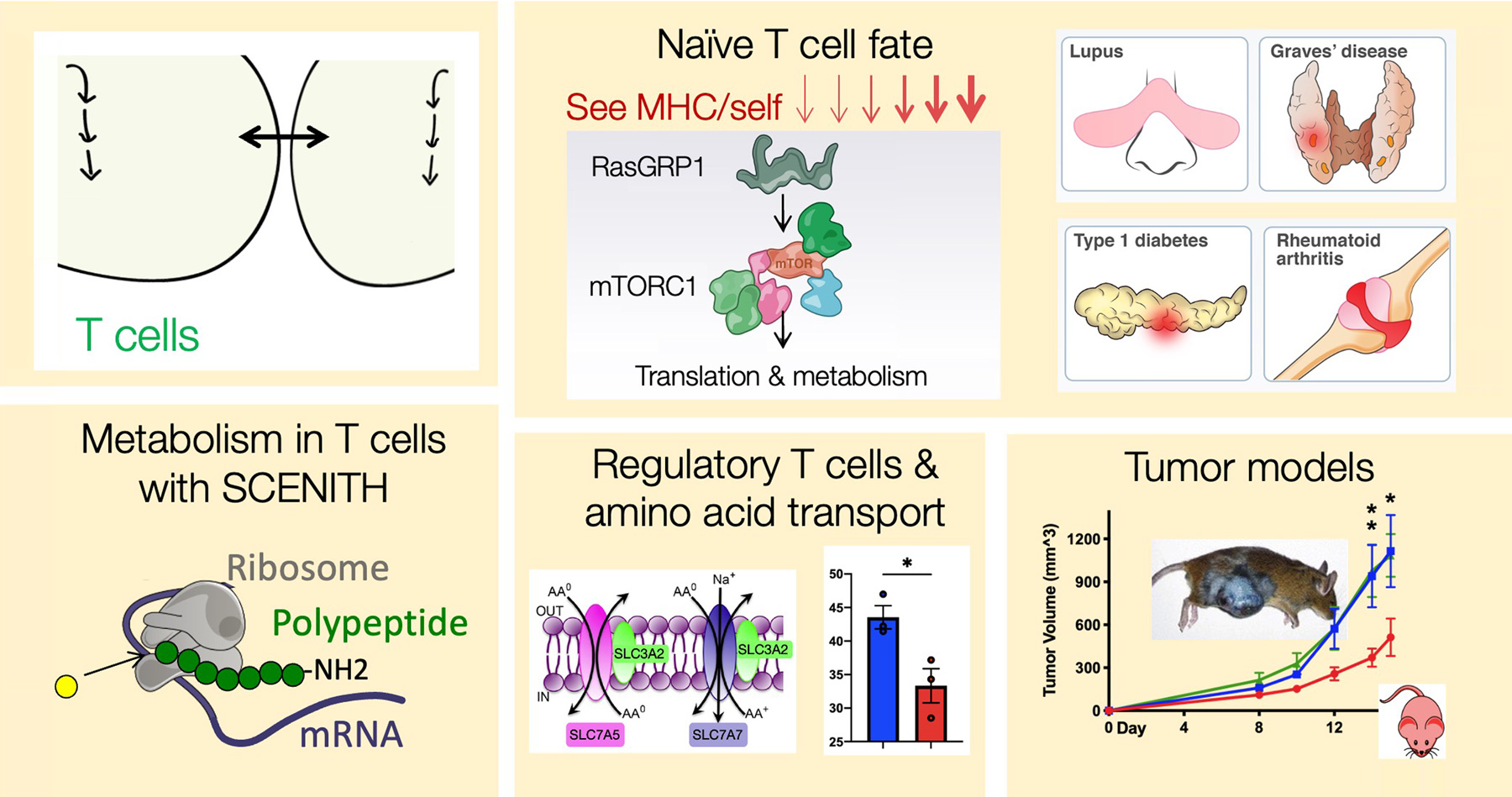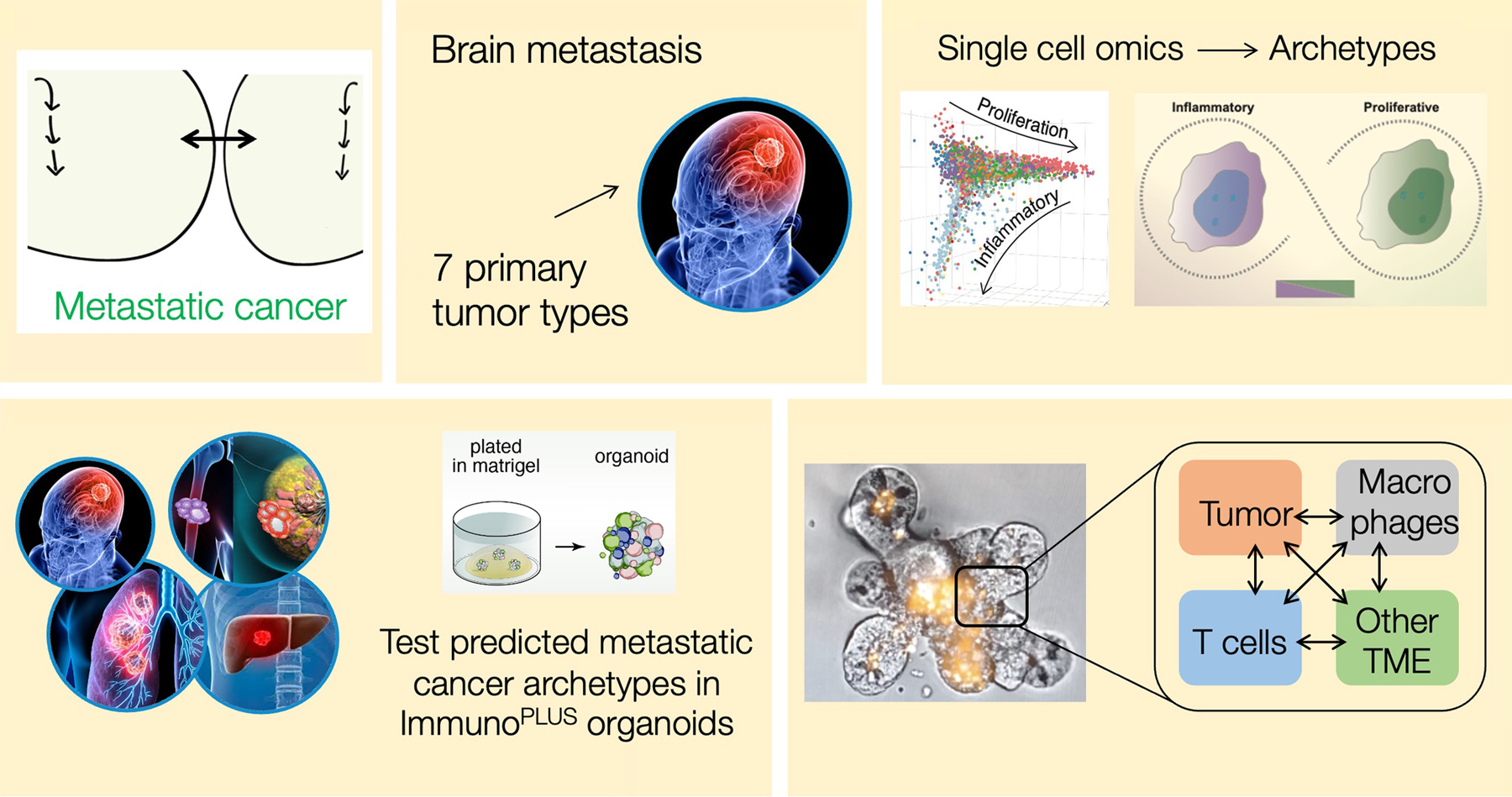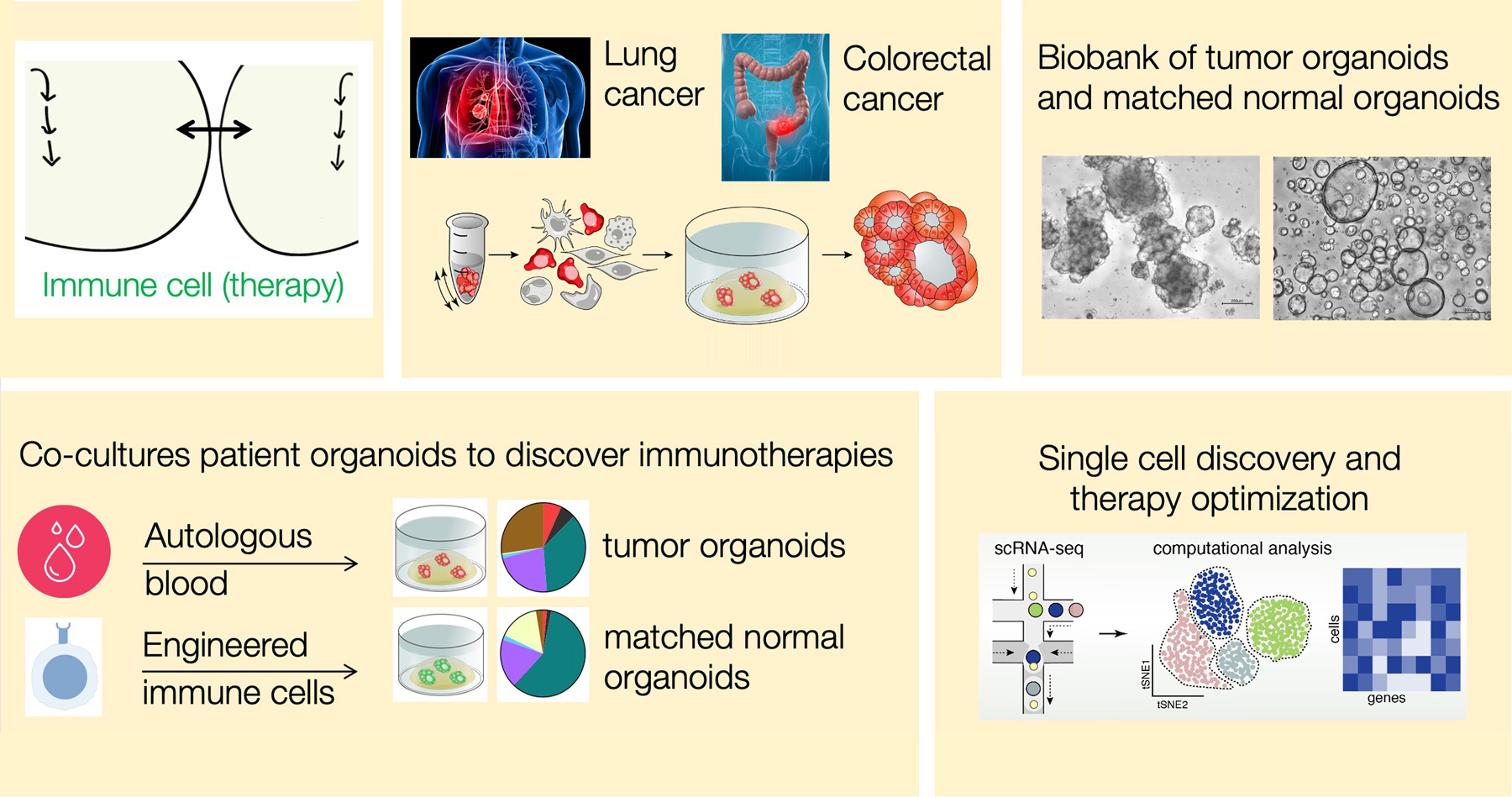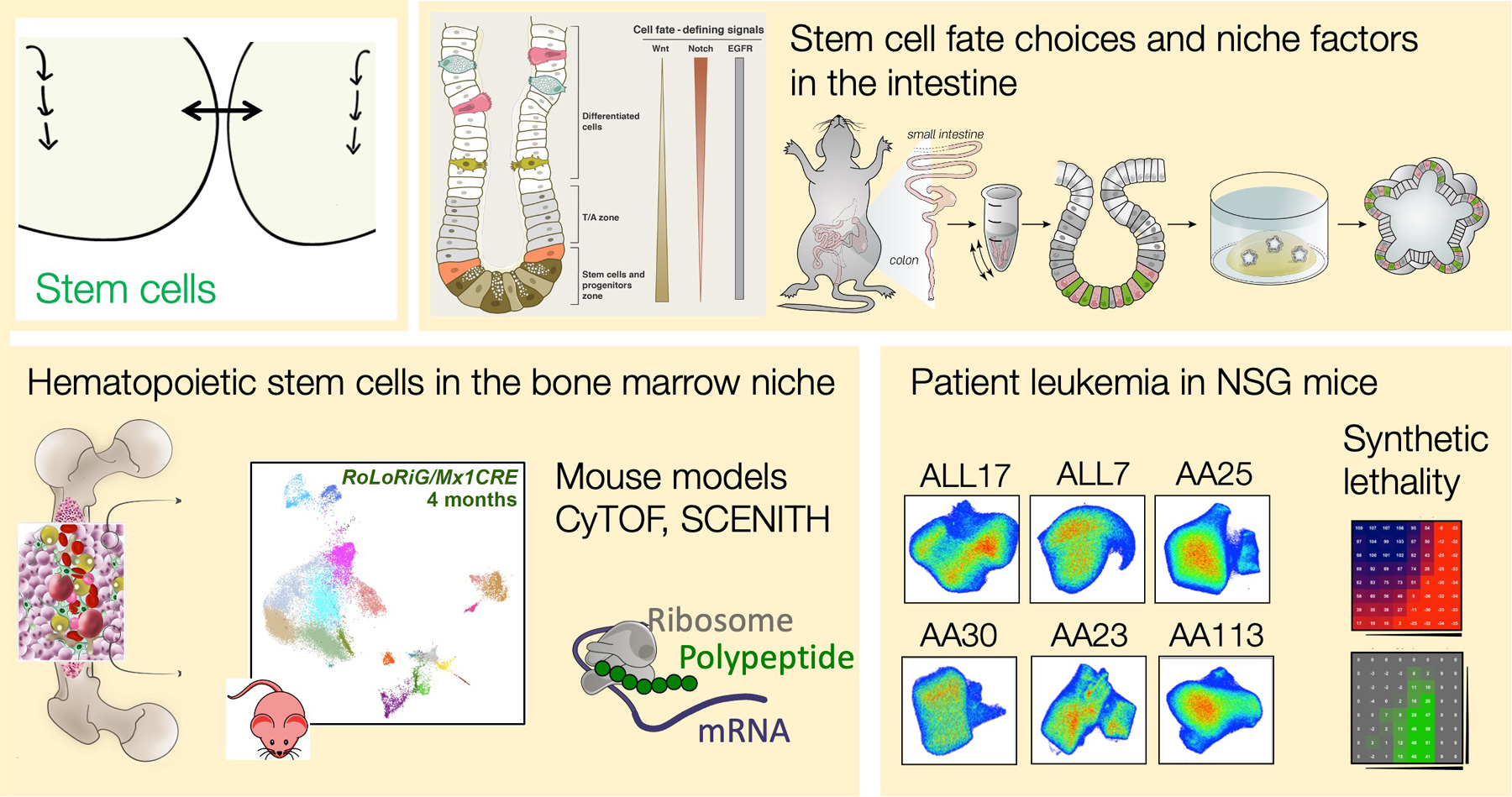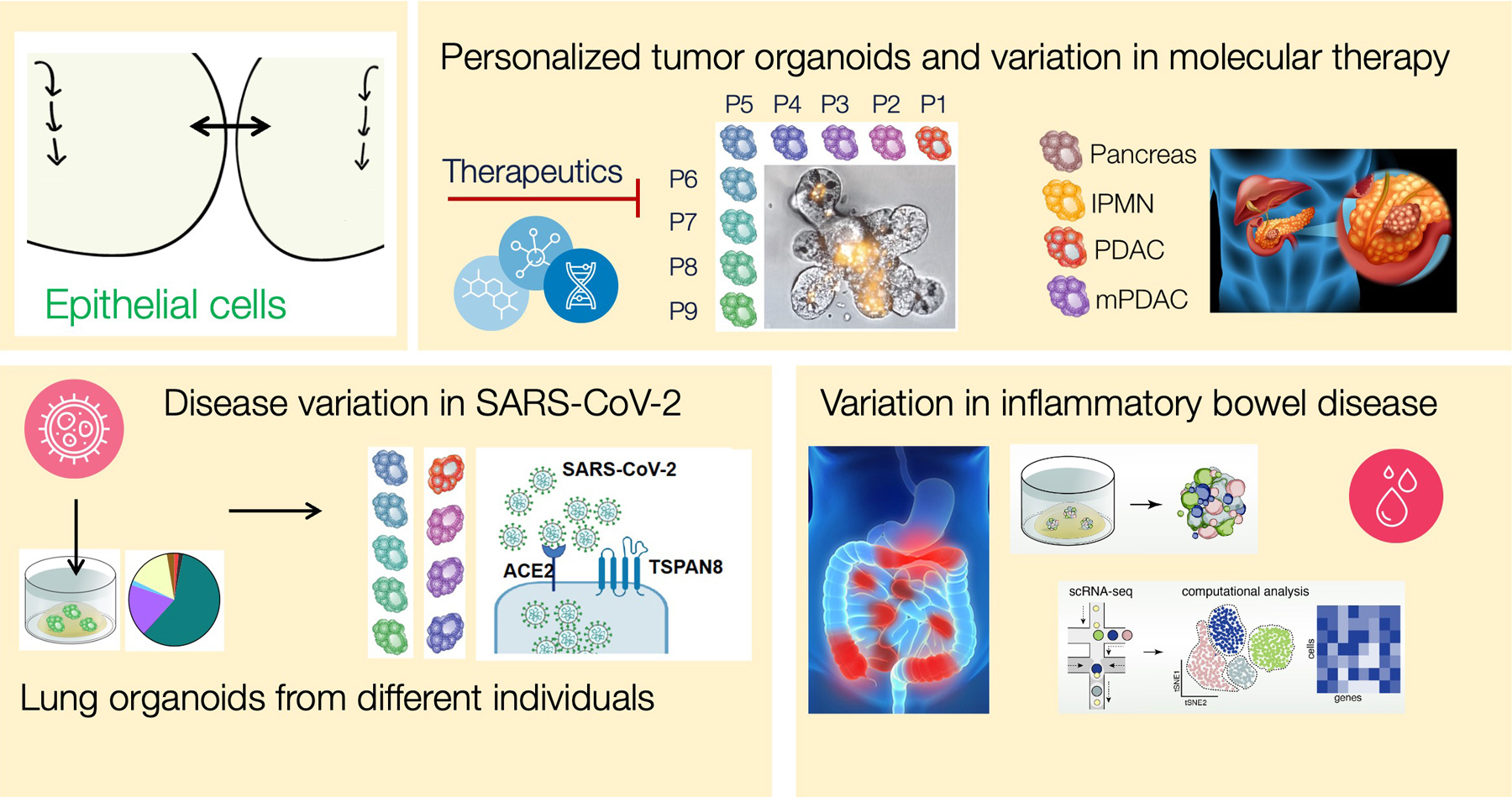research
The Roose lab focuses on understanding cell fate decisions driven by cell-cell interactions with emphasis on understanding “fitness” of the receiver cell. We are interested in different types of receiver cells, in normal tissue homeostasis and disease, and utilize spectral flow, CyTOF, single cell RNAseq, SCENITH, organoids, mouse models, and patient samples.
Fitness of T cells
How are naïve T cells ready to react to infections but refrain from causing autoimmune disease? We apply spectral flow and SCENITH to understand the role of metabolism in T cells with individual cell resolution and investigate the impact on fitness of conventional effector T cells as well as regulatory T cells.
Fitness of Metastatic cancers
90% of cancer patients die from metastasis but we do not understand the rule book of metastasis. Using single cell omics we started to investigate patterns (archetypes) of brain metastasis. These archetypes clearly demonstrate bidirectional crosstalk between cancer- and immune- cells, which we aim to unravel with the use of ImmunoPLUS organoids.
Fitness of Immune cells in cancer therapy
Cancer immunotherapy is effective for some tumor types and some patients, but not for all cancer patients. In this project we are capitalizing on our immunology- and organoid- expertise to select, design, and test new immunotherapies in a personalized manner.
Fitness of Stem cells
Both in the intestine and in the bone marrow, stem cells provide a continuous stream of daughter cells. We investigate the impact of niche factors on stem cell potential and their cell metabolism. We capitalize on these insights to understand leukemia in the bone marrow and to design effective combination therapy.
Variation in Epithelial cell Fitness in different patients
By leveraging panels of biobanked organoids form different patients/subjects, we aim to understand molecular therapy efficacy in pancreatic cancer, discover new SARS-CoV-2 infection biology, and investigate epithelial-immune cell crosstalk in IBD.
